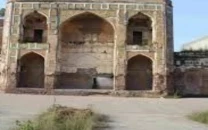Rawalpindi bans Arbaeen mourning walks
Admin prohibits 12 traditional processions citing security concerns

The Chehlum of Imam Hussain (RA) and the martyrs of Karbala will be observed on Friday, August 15.
In remembrance, six major mourning processions, including Zuljinah, Ta'ziya, and Alam, will be taken out across Rawalpindi.
However, Rawalpindi Commissioner Aamir Khattak has issued a formal order banning all 12 traditional "mashi walks" (mourning marches) that originate from different parts of the Rawalpindi Division.
Those who defy the ban will be added to the Fourth Schedule and face legal charges.
The district administration has requested 20 government buses to transport participants free of charge to central Imambargahs and procession points. The decision was made during a high-level meeting chaired by the commissioner.
What is Arbaeen Walk?
Arbaeen in Arabic means forty - referring to the 20th of Safar, the 40th day after the martyrdom of Imam Hussain (RA), when people from all over the world travel to Karbala. On ordinary days, pilgrims usually arrive at Najaf Airport or travel from Iran to Najaf by bus, but on the occasion of Arbaeen, they specially walk from the shrine of Hazrat Ali (RA) in Najaf to Karbala.
This distance from Najaf to Karbala is 80 kilometres, and the walkers include people of all ages, colours, ethnicities, religions, and sects. Although Najaf and Karbala are connected by a dual carriageway, the Iraqi government has built a separate road alongside it for pedestrians, making the walk easier while keeping vehicular traffic smooth and uninterrupted.
The tradition of the Arbaeen Walk is very old. The first visitor to Imam Hussain's (RA) shrine was the elderly and venerable companion of the Holy Prophet (pbuh), Hazrat Jabir bin Abdullah Ansari (RA), who in the second year after the tragedy of Karbala, walked to the grave of Imam Hussain (RA). Thereafter, his followers joined him every year, and the walk continued in various forms until today.
In Pakistan, this walk has been observed for the past five to six years, following the same tradition. Mourners gather at their local imambargahs and then jointly participate in the main mourning processions. The mashi (walk) from Taxila to Rawalpindi has been taking place for the last 10 years. From Taxila, mourners travel together in 20 to 30 vehicles to Saddar, park their vehicles there, and walk about one kilometre from Saddar to Raja Bazaar - men, women, children, and youth walking together - before joining the central mourning procession. Over time, this practice has spread further.
























COMMENTS
Comments are moderated and generally will be posted if they are on-topic and not abusive.
For more information, please see our Comments FAQ